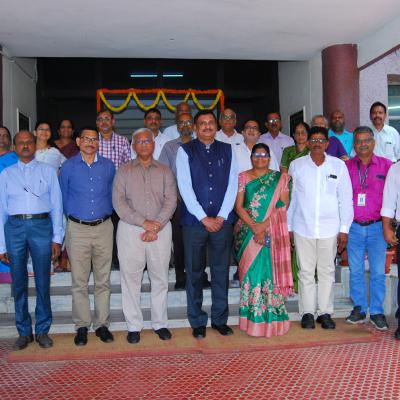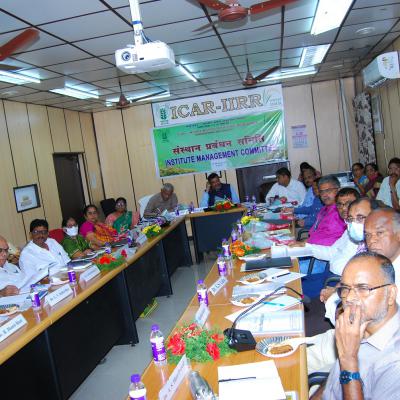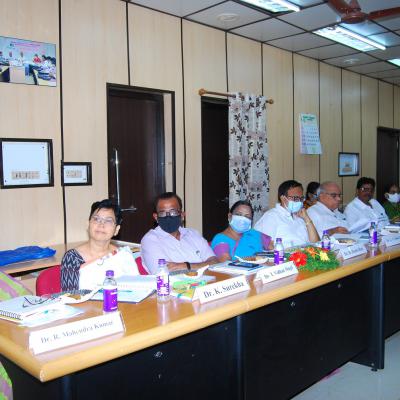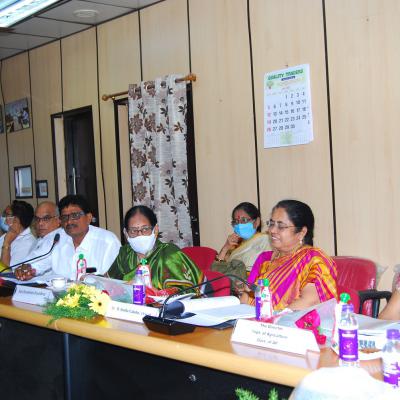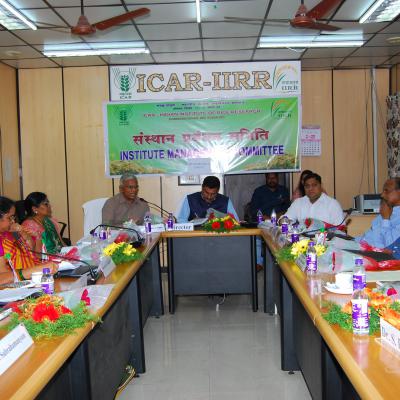Research Achievements
- A total of 1777 rice varieties including 162 hybrids have been released to date for various ecologies across the country through All India Coordinated Rice improvement programme.
- First BLB resistant “Improved Samba Mashuri” was developed through MAS, First drought tolerant variety (DRR Dhan 42), First Biofortified (DRR Dhan 45), first drought and submergence tolerant (DRR Dhan 50), first heat tolerant (DRR Dhan 52) and first low P tolerant (DRR Dhan 60), first MS grain hybrid (DRRH3) and first Genome edited line (DRR Dhan 100) were developed from the Institute.
- IIRR has developed a rapid and reliable assay for assessment of purity of seed-lots of rice hybrids and CMS lines and a rapid diagnostic kits for Rice Tungro virus and artificial screening technique for false smut under glass house and field conditions
- A major QTL for gelatinization temperature qGT6 fine-mapped and functional marker BADEX 7-5 for aroma identified.
- Novel resistant genes fine mapped: Xa33 (for BB), Gm3 & Gm8 (for gall midge). Pi68t, Bph33, Polygalacturonase AG1IA_04727, Sugar transporter gene LOC_Os11g42430 and published draft genome sequence of yellow stem borer.
- Developed genome edited lines of Samba Mahsuri (Gn1a) with increased grain number (350-500). Tested in AICRP
- Identified promising heat tolerant and nitrogen use efficient rice genotypes.
- Crop husbandry practices were standardized for organic cultivation of rice.
- A Modified leaf colour chart (LCC) was developed for better nitrogen management and commercialised.
- An efficient 8 row drum seeder, ridding type drum seeder, pot pudler have been designed and developed for saving labour, time and water.
- Novel concept of trap crop for yellow stem borer management developed and Ecological engineering for control of insect pests.
- Value added products like Rice Riche Pain Relieving Gel, Rice Riche Moisturizing Lotion, Rice Riche Cream for Dry and Cracked heel and Rice based face scrub which keeps skin smooth, soft and moist developed.
- Organized as many as 300 training programmes during the last 25 years and trained more than 20000 farmers and extension functionaries.
- IIRR coordinates Breeder seed production and frontline demonstrations across the country popularising and disseminating technologies to farmers and Effective implementation of Tribal Sub plan and SCSP activities.
- Developed Rice Knowledge Management, Seed Portal, GIS, AICRIP Intranet portals for dissemination of information and benefit of stakeholders.
- An economical & portable, Soil testing kit was developed and distributed to more than 25000 testing kits distributed along with soil health cards for the benefit of farmers.
- Water saving technologies, Direct Seeded Rice, Integrated pest management, Integrated Nutrient management packages were developed for rice ecologies.
- Eight Copyrights and four patents received and application for 6 copyrights and four patents submitted.


